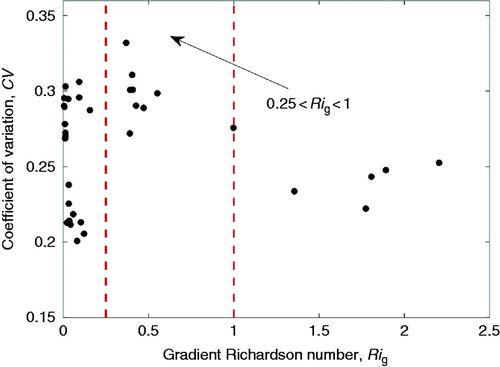Internal waves and mixing in the epilimnion of a lake affects spatial patterns of zooplankton in a body-size dependent manner
Abstract
Zooplankton are not uniformly distributed in space but are patchy at multiple scales as a result of interactions between their directed motion and both large- and small-scale water currents. Using field data from July and August 2009 and 2010 we report observations of the relationship between enhanced small-scale spatial variability in zooplankton and the presence of internal waves in the weakly stratified epilimnion of Lake Opeongo, Ontario. To quantify this physical–biological coupling, we compared the variance of isotherm displacement and gradient Richardson number (Rig) measured using moored sensors, with the small-scale spatial distributions of zooplankton measured using an optical plankton counter towed along linear transects intersecting the moorings. For the smallest size ranges of zooplankton (284–450 μm) we found that spatial variability was statistically greatest at intermediate Rig (0.25<Rig<1), whereas no such relationship existed for the two larger zooplankton size classes. The highest values of variability of isotherm displacement were also found at intermediate Rig. Direct comparison between isotherm variability and spatial variability of zooplankton also demonstrated this proportional relationship. Comparisons of 2010 temperature transects with the moored temperature data set suggest typical and consistent wave frequency of 4 × 10−4 − 2.5 × 10−3 Hz and wavelength of 50–500 m. Vertical velocities estimated from wave characteristics were faster than swimming speeds of small zooplankton, essentially rendering them passive. This is consistent with our observations that increased variability in the distribution of small-bodied zooplankton at intermediate values of Rig are linked to increased variability of isotherm displacement at those values of Rig.


 求助内容:
求助内容: 应助结果提醒方式:
应助结果提醒方式:


